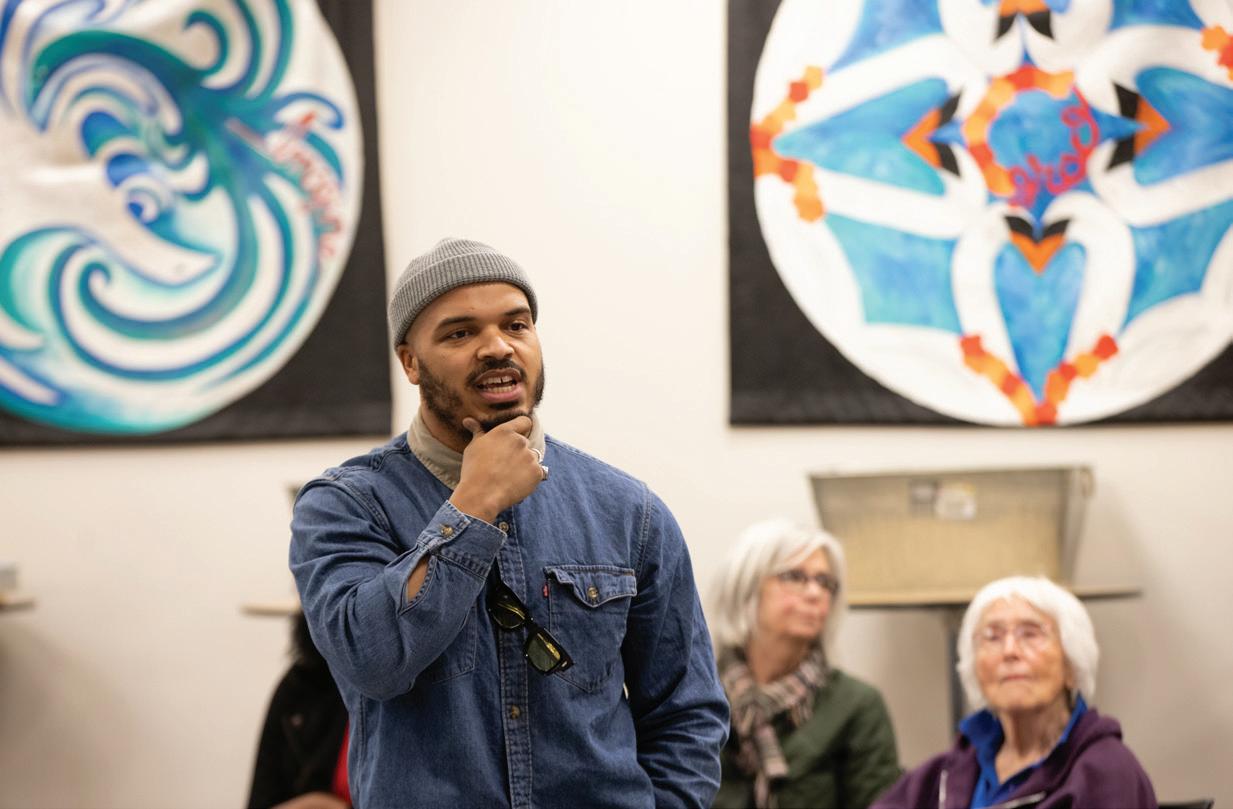
1 minute read
North Minneapolis residents wary of proposed Blue Line extension
Lack of transparency and stifling public comment are concerns
their concerns.
By H. Jiahong Pan
Writer
Contributing racey Pennie used to live along the Blue Line in South Minneapolis but says she had to move because her quality of life declined after it opened. Years later, she finds herself fighting the same battle in North Minneapolis, where she distributed flyers to more than 700 people on the West Broadway corridor about plans to extend the Blue Line through the community.
Forty-five of those people, many of whom are Lyn-Park residents, showed up at a monthly healing circle hosted by the local NAACP chapter, where people can discuss and work through the issues they face. All except one were there because they opposed the transit line extension going through North Minneapolis, citing the Metropolitan
Council’s handling of the Southwest light rail construction, and that the project isn’t designed to serve their community. They are also frustrated that the Met Council and Hennepin County staff, who were invited by Lyn-Park residents, did not show up at the healing circle and are ignoring
Calls for transparency stem from a March 6th incident, where project staff did not allow Lyn-Park residents participating at a Met Council and Hennepin County Blue Line extension meeting to ask questions in an open forum. “I’m not gonna do a meeting like that,” said Cynthia Wilson, president of the Minneapolis NAACP chapter who was there and tried to convene an open forum. “I may have the same concerns as somebody else. And I think meetings like this should be open, so that people can share with other people.”
The strategy of quelling public comment in an open forum is actually one Met Council and Hennepin County staff are employing to ensure they hear everyone’s thoughts and include those who do not want to voice their ideas publicly, especially in an open forum. It is a tactic employed by other cities, counties and transit agencies nationwide.
“The workshop format of the meetings has been designed to speak individually with as many attendees as possible, answering specific questions and hearing feedback from many voices,” said project spokesperson Trevor Roy. He adds that they plan to host public hearings where community members can voice their grievances in an open forum as part of the federally required environmental review process.
Indeed, the situation the Met Council and Hennepin County were looking to avoid played out at the circle, where several attendees tried to heckle an individual who they believed was an informant, sent by the agencies—a bald White guy in a dress shirt—who was the only person in the circle that supported the project going through West Broadway in North Minneapolis.










